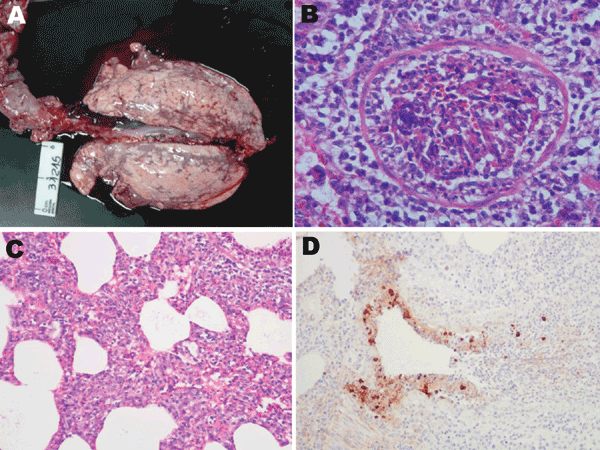Volume 16, Number 2—February 2010
Dispatch
Pandemic (H1N1) 2009 Outbreak on Pig Farm, Argentina
Figure

Figure. Postmortem samples from clinically affected pigs, Argentina, 2009. A) Macroscopic lung lesions with distinctive scattered dark-red foci of lobular consolidation (chessboard-like) in all lobes. B) Severe necrotizing bronchiolitis with partially denuded epithelia. Hematoxylin-eosin stain; original magnification ×400. C) General view of the alveolar walls showing moderate interstitial thickening by leukocytes. Hematoxin-eosin stain; original magnification ×200. D) Bronchioli. Positive-labeled nuclei and cytoplasm of bronchial epithelial cells and mononuclear cells in the alveoli. 3,3′-diaminobenzidine counterstain with hematoxylin stain; original magnification ×200.
1These authors contributed equally to this article.
Page created: May 09, 2011
Page updated: May 09, 2011
Page reviewed: May 09, 2011
The conclusions, findings, and opinions expressed by authors contributing to this journal do not necessarily reflect the official position of the U.S. Department of Health and Human Services, the Public Health Service, the Centers for Disease Control and Prevention, or the authors' affiliated institutions. Use of trade names is for identification only and does not imply endorsement by any of the groups named above.